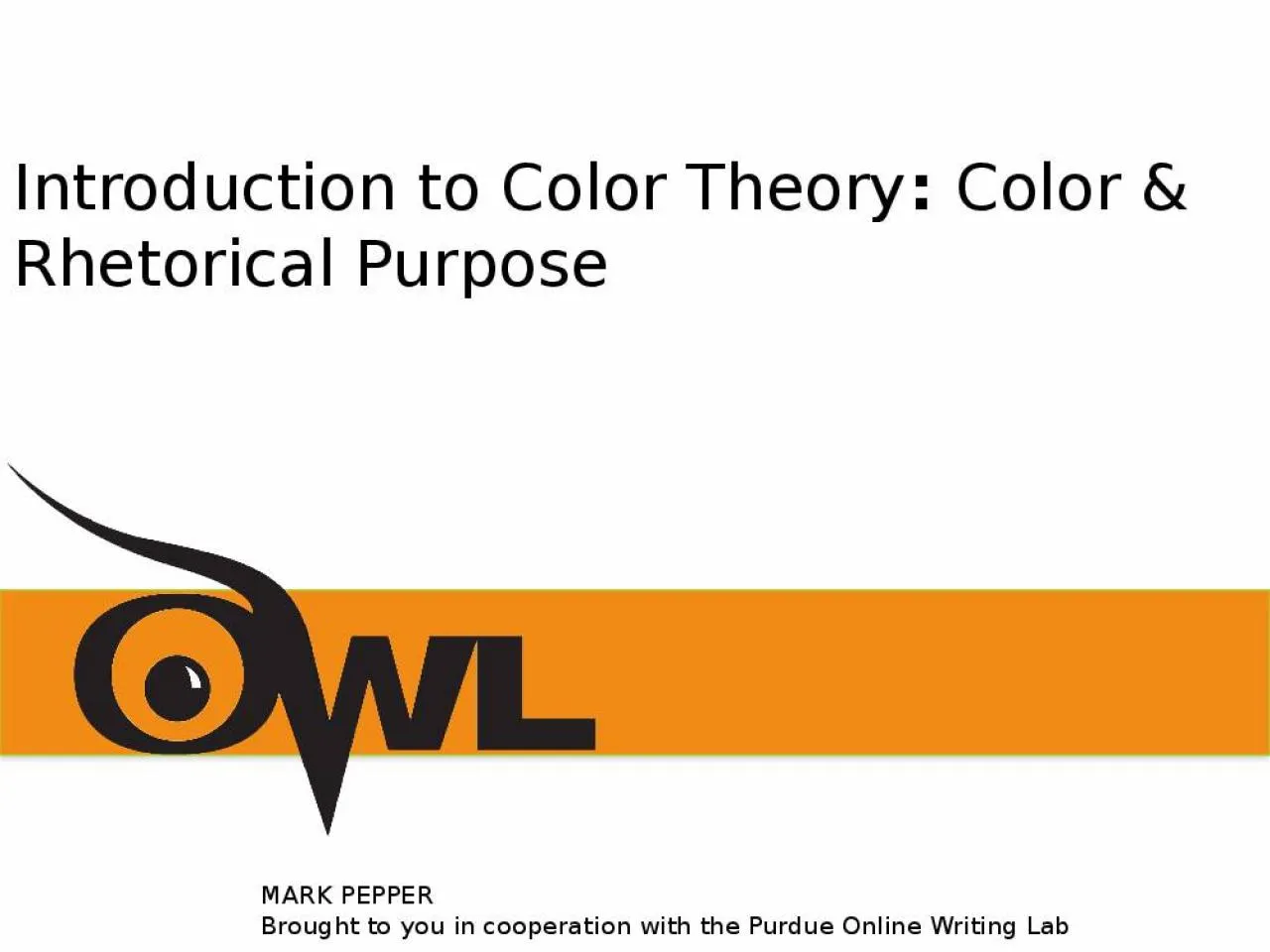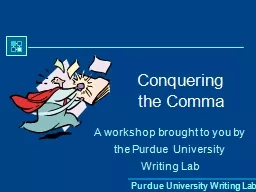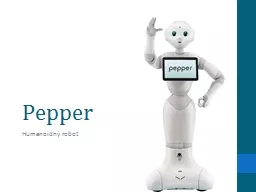PPT-MARK PEPPER Brought to you in cooperation with the Purdue Online Writing Lab
Author : lily | Published Date : 2022-02-14
Introduction to Color Theory Color amp Rhetorical Purpose Color Theory is a system of rules and guidance for mixing various colors in order to Create Aesthetically
Presentation Embed Code
Download Presentation
Download Presentation The PPT/PDF document "MARK PEPPER Brought to you in cooperatio..." is the property of its rightful owner. Permission is granted to download and print the materials on this website for personal, non-commercial use only, and to display it on your personal computer provided you do not modify the materials and that you retain all copyright notices contained in the materials. By downloading content from our website, you accept the terms of this agreement.
MARK PEPPER Brought to you in cooperation with the Purdue Online Writing Lab: Transcript
Download Rules Of Document
"MARK PEPPER Brought to you in cooperation with the Purdue Online Writing Lab"The content belongs to its owner. You may download and print it for personal use, without modification, and keep all copyright notices. By downloading, you agree to these terms.
Related Documents














